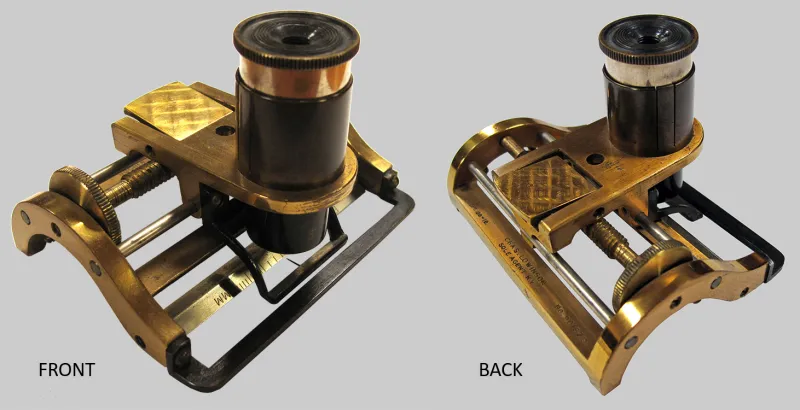Featured Artifact
The fabric tester—also called a linen tester, pick counter, thread counter, or micrometer—is an optical instrument used to check the threads that criss-cross each other within a specific area of woven cloth. The number of stitches and spaces between the stiches of the warp (thread that is held in tension on the loom or frame) and weft (the thread that is drawn over and under the warp) reveal information about the quality and type of fabric.
The trade journal Silk featured one of these instruments in its September, 1909 technical section, stating that “the device has been adopted by the
Appraiser of the Port of New York as an aid in the securing of accurate count in the matter of imported fabrics of every description.” The scale was adjusted to match the type of cloth (such as silk versus cotton), and density of the stitches was studied to determine the tariff. Counting was still accomplished by eye, assisted by the tester’s built-in pointer, frame and magnifying lens. Precise measurement was critical, because a small deviation on inspection could translate to a big dollar duty assessment on full shipments.
This fabric tester was transferred in its original velvet-lined box to the Customs Service historical collections from Dulles International Airport District Office in 1987. An inscription on the upper surface reads: "Chas. Lowinson, Sole Agent N.Y., Pat. Sept 20-10, No. 901879, 5694." The bottom surface is marked: "Chronik Bros. New York." The Chronik Brothers obtained several patents on their thread counter between 1909 and 1929. Lowinson was the exclusive distributor.

FABRIC TESTER
Object ID# 2014.1.1
Patented 1910
Dimensions: approx. 8.7cm wide, 6.5cm deep, 5.9cm high
Brass optical device with rotating scales and adjustable lens used for thread-counting.
The CBP History Program collects and preserves objects, documents, photographs and other media relating to CBP and its legacy agencies. The collections are used for research, exhibitions and education programs.

